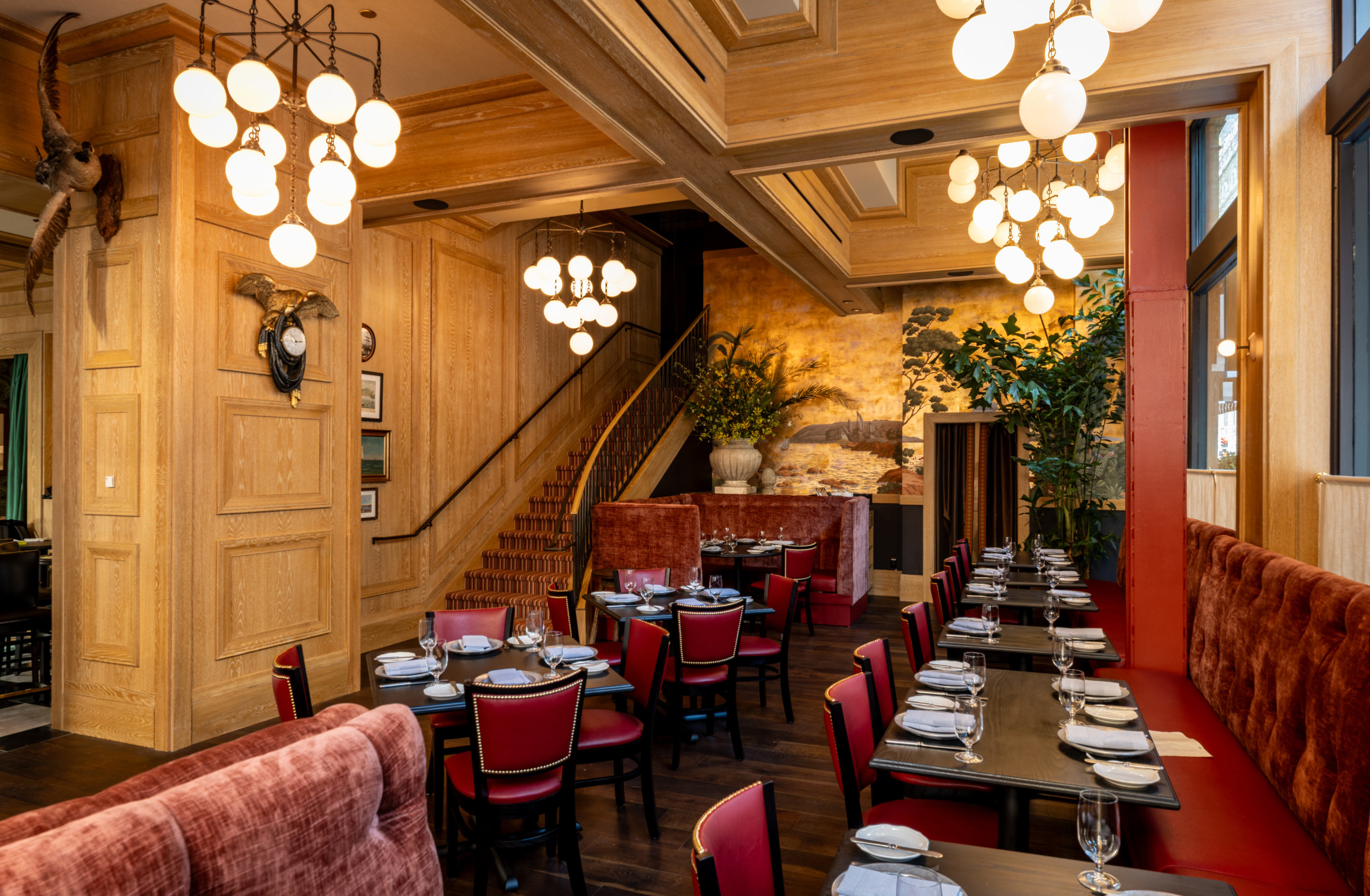
Running a restaurant in New York City means every dollar counts. Between sky-high rent, labor costs that seem to climb monthly, and the constant pressure to deliver exceptional hospitality, restaurant owners are always looking for ways to optimize operations without sacrificing the guest experience. That's where AI-powered restaurant management systems like Hostie AI are making a real difference. (Hostie AI)
The numbers are compelling: a recent cost comparison study shows restaurants can achieve a 2,802% ROI with AI automation systems. (Hostie AI) But what do those numbers actually mean for your bottom line? Let's break down the real-world math using current NYC labor rates and actual call volume data to show exactly how a 50-seat bistro can save $65,000 annually while paying back their AI investment in just 16 days.
Before we dive into the ROI calculations, let's establish the baseline problem. According to industry research, restaurants miss approximately 30% of incoming calls during peak hours. (SevenRooms) This isn't just an inconvenience - it's a revenue killer.
Consider this: over two-thirds of Americans would ditch restaurants that don't answer the phone. (Hostie AI) For a 50-seat NYC bistro averaging $150 per table, each missed call potentially represents $150 in lost revenue. Multiply that by the dozens of calls restaurants receive daily, and the numbers become staggering.
The food and beverage AI market is currently valued at $9.68 billion and is expected to reach $49 billion over the next five years, driven largely by restaurants recognizing these operational inefficiencies. (Hospitality Tech)
Let's get specific about NYC labor costs. As of 2025, the minimum wage for restaurant workers in New York City is $16 per hour, but experienced hosts and managers who typically handle phone calls earn significantly more - often $20-25 per hour when you factor in benefits and payroll taxes.
For our 50-seat bistro calculation, we'll use these realistic NYC figures:
But here's where it gets interesting. Major restaurant chains are already recognizing this opportunity. Dine Brands, the parent company of Applebee's and IHOP, announced plans in June 2025 to introduce Voice AI Agents to handle customer orders over the phone, specifically citing high call volumes and labor shortages as driving factors. (Newo AI)
Hostie AI isn't just another phone answering service - it's a comprehensive guest management system designed by restaurant professionals for restaurant professionals. (Hostie AI) The platform handles calls, texts, and emails while managing reservations and takeout orders, integrating seamlessly with existing reservation and POS systems.
What makes Hostie particularly compelling is its nuanced approach to hospitality. The system was created by a restaurant owner and an AI engineer, resulting in technology that understands the subtleties of restaurant operations. (Hostie AI) It can handle everything from simple reservation changes to complex private event inquiries and complicated order modifications.
After integrating with partner establishments such as Flour + Water and Slanted Door, Hostie now handles over 80% of their guest communications automatically. (Hostie AI) Teams have reported growing customer satisfaction in the dining experience and customer service after implementation.
Now let's reverse-engineer the math behind that impressive ROI claim. Here's how a 50-seat NYC bistro can realistically save $65,000 annually:
Total Annual Savings: $65,002
With Hostie AI starting at just $199 per month, the payback period calculation is straightforward:
This assumes the restaurant begins seeing immediate benefits from reduced labor costs and improved call handling efficiency, which aligns with real-world implementation experiences.
To help restaurant owners calculate their specific ROI, we've created a Google Sheets template that incorporates the key variables:
Annual Savings = (Labor Cost Reduction) + (Revenue Recovery) + (Efficiency Gains)
ROI Percentage = ((Annual Savings - Annual AI Cost) / Annual AI Cost) × 100
Payback Period = Annual AI Cost / (Annual Savings / 365)
The restaurant industry's embrace of AI isn't just about cost savings - it's about survival in an increasingly competitive market. Research shows that 85% of Australian restaurant operators are leveraging AI in some way, followed by 70% in the U.S. and 66% in the U.K. (SevenRooms)
The top uses of AI in restaurants include data analytics, processing reservations, and creating marketing collateral. (SevenRooms) This broad adoption suggests that AI is moving from "nice to have" to "must have" for competitive restaurants.
While several companies offer restaurant AI solutions, Hostie's positioning is unique. Unlike generic voice AI platforms, Hostie was specifically designed for restaurants by restaurant professionals. (Hostie AI)
Competitors like Slang.ai focus primarily on voice assistance and directing guests to online ordering. (Slang AI) Other solutions like IYREE position themselves as operational copilots that consolidate data from multiple systems. (IYREE) Yelp Guest Manager offers waitlist and reservation management but requires additional Yelp Ads investment for maximum effectiveness. (Yelp)
Hostie's advantage lies in its comprehensive approach to guest communications combined with deep restaurant industry expertise. The platform offers automated 24/7 call answering with natural conversation abilities, multi-channel management, real-time language translation, and instant response to common inquiries. (Hostie AI)
While the ROI numbers are compelling, successful implementation requires careful planning:
Beyond the immediate financial benefits, AI implementation creates ripple effects throughout restaurant operations. Staff can focus on in-person hospitality rather than phone management, leading to improved dining experiences. (Hostie AI) The 24/7 availability means restaurants never miss late-night orders or early morning reservation requests.
AI-enabled machines and devices in the restaurant industry can analyze their surroundings, make informed decisions, and offer customized services to customers. (Johnson & Wales University) This capability extends beyond simple call answering to include personalized recommendations and dynamic menu management.
For restaurant owners evaluating AI investment, the financial case extends beyond immediate ROI:
While AI implementation offers significant benefits, restaurants should consider potential challenges:
The restaurant technology landscape continues evolving rapidly. Generative AI, which can create text, images, audio, and video from prompts written in plain English, has been incorporated into various software applications since ChatGPT's launch in December 2022. (BentoBox)
Restaurants implementing AI now position themselves advantageously for future innovations. The data collected through AI systems provides valuable insights for menu optimization, staffing decisions, and customer preference analysis.
For NYC restaurant owners considering AI implementation, the math is compelling but the decision involves more than numbers. The combination of immediate cost savings, revenue recovery, and operational improvements creates a strong financial case.
Hostie AI's $199 monthly investment represents less than the cost of hiring a part-time host for 10 hours per week at NYC wages. Yet the system works 24/7, never calls in sick, and handles multiple calls simultaneously during peak periods.
What originally started as a solution to help reduce operational tension has quickly grown into something much bigger. (Hostie AI) The platform now represents a fundamental shift in how restaurants can approach guest communications and operational efficiency.
The 2,802% ROI and 16-day payback period aren't just impressive statistics - they represent a fundamental shift in restaurant economics. By automating routine communications while maintaining the nuanced hospitality that defines great restaurants, AI systems like Hostie enable operators to focus on what they do best: creating exceptional dining experiences.
For a 50-seat NYC bistro, the $65,000 annual savings can mean the difference between struggling to break even and building a sustainable, profitable operation. The technology handles the routine so your team can focus on the remarkable.
The restaurant industry's AI adoption is accelerating because the benefits are measurable and immediate. (Hospitality Tech) Early adopters gain competitive advantages that compound over time, while late adopters risk falling behind in an increasingly efficiency-driven market.
As the food and beverage AI market continues its rapid growth toward $49 billion, restaurant owners who embrace these tools now will be best positioned for long-term success. The question isn't whether AI will transform restaurant operations - it's whether your restaurant will lead or follow that transformation.
The savings come from reduced labor costs through AI-powered phone handling, improved reservation management, and operational efficiency. By automating routine tasks like taking reservations and answering common questions, restaurants can reduce staffing needs while maintaining excellent customer service. The $65K figure is based on real NYC labor costs and typical call volumes for a 50-seat establishment.
Based on the comprehensive financial analysis, a 50-seat NYC bistro can achieve payback in just 16 days. This rapid ROI is possible due to immediate labor cost savings and improved operational efficiency. The 2,802% annual ROI demonstrates the significant long-term value of AI implementation in restaurant operations.
AI systems like Hostie AI can handle high call volumes 24/7 without breaks, sick days, or wage increases. Research shows that major chains like Applebee's and IHOP are implementing Voice AI Agents to handle customer orders and reduce stress on human staff. AI consistently captures reservations, reduces no-shows, and frees up staff to focus on in-person guest experiences.
According to Hostie AI's official announcements, the platform provides comprehensive restaurant management solutions including AI-powered phone handling, reservation management, and operational optimization. The system is designed to integrate seamlessly with existing restaurant operations while providing measurable ROI through reduced labor costs and improved efficiency.
ROI calculators provide reliable estimates when based on real data like actual labor costs, call volumes, and operational metrics. The 50-seat NYC bistro example uses current NYC minimum wage rates, typical restaurant call patterns, and verified cost savings. However, actual results may vary based on specific restaurant operations, location, and implementation approach.
The food and beverage AI market is valued at $9.68 billion and expected to reach $49 billion within five years. Research shows 85% of Australian restaurant operators and 70% of U.S. operators are already leveraging AI for tasks like data analytics, processing reservations, and marketing. Labor shortages and rising operational costs are accelerating AI adoption across the hospitality industry.
RELATED


